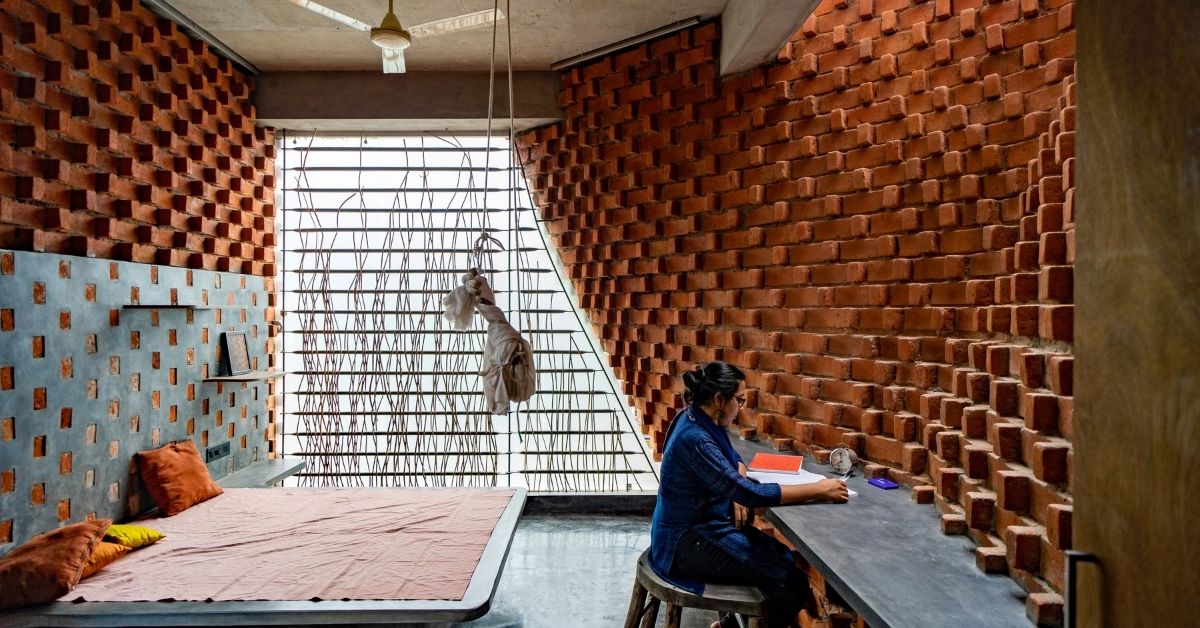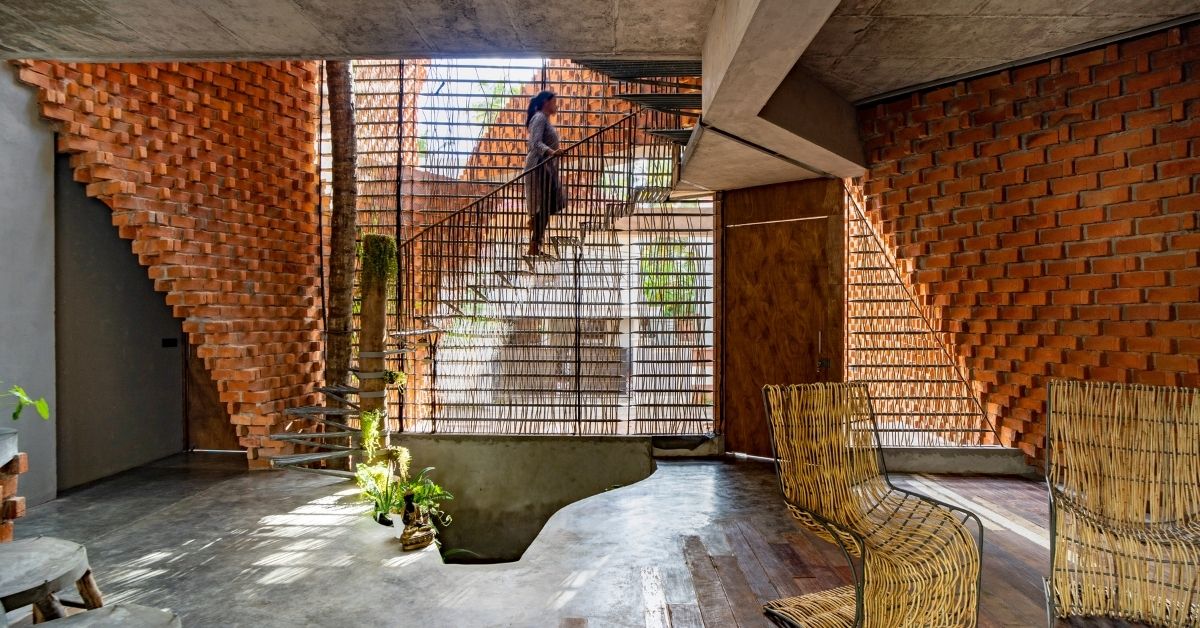Laurie Baker, often referred to as the father of sustainable architecture, inspired several Indian architects to build structures that do not harm the environment. His primary construction material was mud, and even today, his innovative techniques are adopted to introduce passive cooling in modern buildings.
Vinu Daniel, founder of Wallmaker, an architectural firm in Trivandrum, is one of Laurie’s most ardent followers. For the last 13 years or so, he has been using sustainable practices diligently. His intricate planning and design has helped reduce the overall costs of a house, cut down the use of ACs, and most importantly, bring pack the dying practice of using bricks and mud in construction.
His latest project is the alluring ‘Pirouette House’, a green marvel that infuses indigenous methods with contemporary homes.

Despite the urban backdrop of the city, the house is surrounded by trees, with a coconut tree situated inside the compound. Perhaps the most captivating aspect of this home are its surreal ‘dancing’ walls, which can leave you in a trance owing to the way they are designed.
Besides being a treat for the eyes, the walls promote natural light and air in the house. Additionally, the team has also used a technique for passive cooling called the ‘Rat Trap Bond’.
“Located right in the middle of an urban and crowded locality of Trivandrum, the site was a small plot that was being suffocated by other residential projects from all four sides.The client wanted a three bedroom house with a sense of privacy and openness in spite of being located in a crowded area,” Vinu tells The Better India.
What went behind the ‘dancing’ walls

Vinu has retained the charm of traditional houses by keeping a central courtyard and constructing all the other spaces around it.
Pirouette’s design takes inspiration from the unique masonry technique of Rat Trap practiced by renowned architect Laurie Baker, as this site didn’t offer the opportunity for soil excavation or for making mud blocks. By opting for bricks, the firm was also mindful about the dying industry of brick kilns in Trivandrum. They employed local artisans to promote this industry, Vinu says.
“The method is an aesthetic means to conceal structural and service elements. This inspiration steered the project in a clear direction to revive the use of kiln fired bricks, which are on the verge of extinction in an era of mass machine production. MMT Ferrocement shells are wafer-like structures which are steel reinforced arched shells with effective thickness of 2.5cm, and they take equal load of respective RCC slabs. They effectively reduce the overall cement consumption by 40% and steel consumption by 30%.These have been used as a replacement for the RCC slab in the roofing, as they are as strong as 1,200 kg/m2,” Vinu explains.
Under the Rat Trap masonry construction method, the bricks are placed vertically rather than horizontally. This creates a cavity in the walls, but their thickness remains the same as a conventional brick masonry wall. The cavity helps cut down the number of bricks and mortar used. This further reduces carbon footprints and costs.
The cavities act as thermal insulators, providing warmth in winters and cool air in summers.

Vinu and his team further included an interesting twist by designing a series of slanting walls that looks like they are dancing left and right, converging only to support the ferrocement shell roof. The design of each wall is customised as per limited space availability and keeping the privacy of clients a priority. The design further elevates cross ventilation.
Vinu has also inculcated Baker’s principle of reusing waste in the construction process. After using bottles, scrap metal, coconut shells and broken bricks for his previous construction projects, this time, he has used discarded scaffolding pipes to form the central staircase and for the grillwork.
Waste wooden planks were pieced together for one part of the flooring in the living areas. “Cane has been acquired from the neighbourhood, treated and wound around the grillwork to create subtle screens for privacy and for various furniture,” he adds.

From tapping into local skills to innovating modern designs that coexist with nature and reducing carbon footprints during the construction, Vinu and his team show how one does not necessarily have to go deep into the forests or atop a hill to achieve sustainable living. A green oasis can be created right in the middle of concrete buildings too.
No comments:
Post a Comment